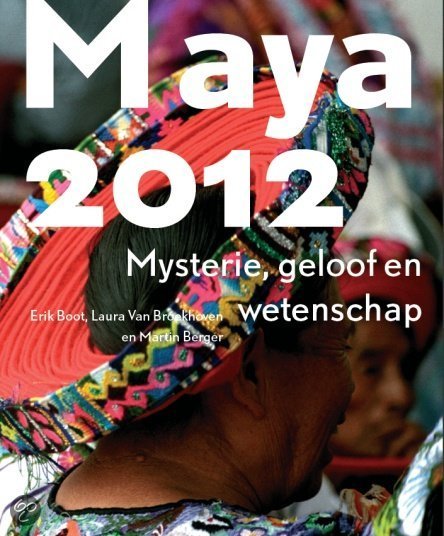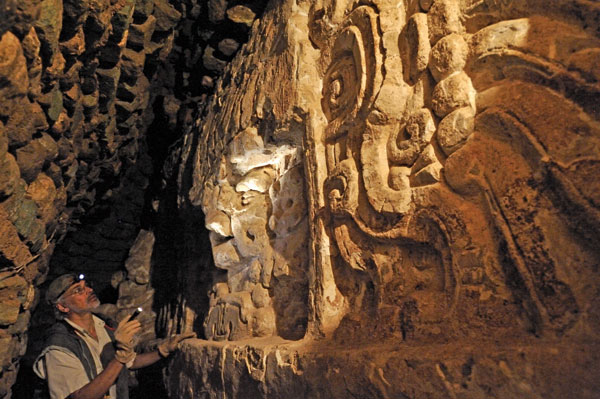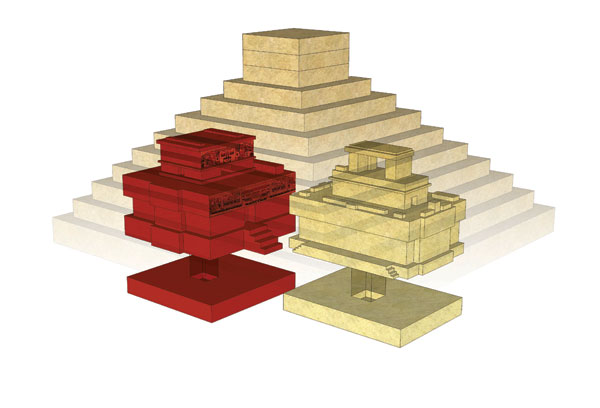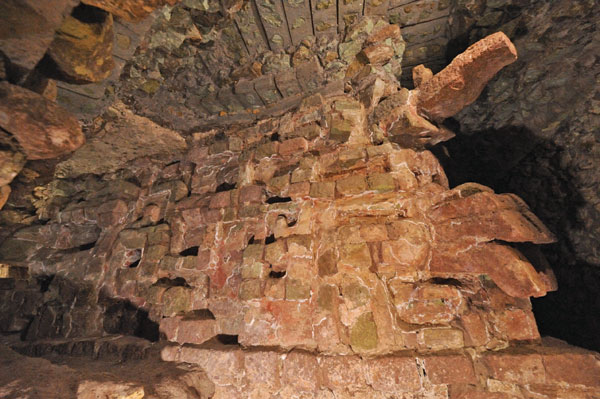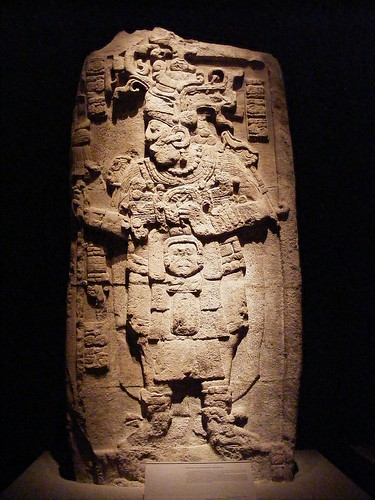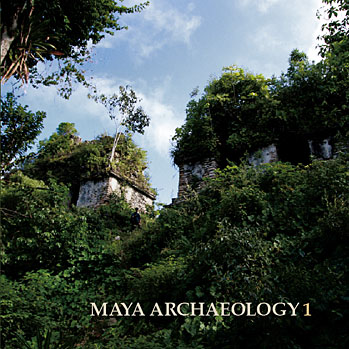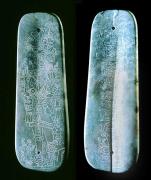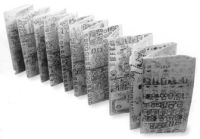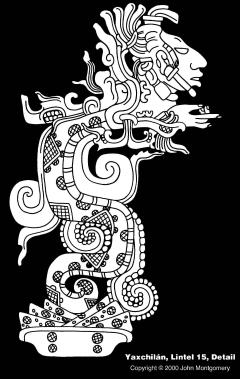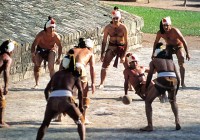Maya News Updates 2007, No. 20: Harvard - Researcher Team at Rastrojon, Copan, and Yet to Go to Yaxchilan (Extended)
Yesterday, April 19, 2007, the online edition of the Harvard Gazette posted a follow-up news item on the research team of Harvard and the Corpus of Maya Hieroglyphic Inscriptions Program. The team arrived in Copan, visited the site of Rastojon, and has yet to go to Yaxchilan(edited by MNU):
Archaeological bookends in Copán Valley: Archaeological team en route to Yaxchilan - A short drive from the main Maya ruins at Copán, a forested hillside holds a cluster of mounds that Peabody Museum archaeologists believe date from near the end of the great Maya civilization that once dominated the region. On Tuesday (April 17), Peabody Museum director and Bowditch Professor of Central American and Mexican Archaeology and Ethnology William Fash, along with director of the Corpus of Maya Hieroglyphic Inscriptions Program Barbara Fash and two Harvard graduate students, walked the site with Honduran government officials charged with regulating and overseeing archaeological activity in the Central American nation.
The site, called Rastrojón, provides a "before" look at an archaeological site, a bookend in time to compare with the simultaneously soaring and crumbling remains a short distance away in what was once the city center. At the main ruins, a draw for tourists from around the world, generations of archaeologists have toiled, tunneling beneath the pyramid-like main acropolis, reconstructing tumbled stonework, and piecing together sculpture that once adorned the buildings and the carved stone pillars called stelae.
Though much work remains to be done there, their toil has already paid off. Tourists walk leisurely among the splendor of the main ruins‚ adeptly climbing stone steps that were little more than a mound of earth with trees growing out of the top when Barbara Fash first saw the site in 1977. Now, Fash was taking time out of her preparations for the Peabody's trip to Yaxchilan in Chiapas, Mexico, to walk two visitors through the main ruins and the associated sculpture museum.
William and Barbara Fash arrived in Copán on Monday (April 16), a day ahead of other members of their team, which is assembling to test digital scanning technology on the Maya inscriptions in Yaxchilan. The archaeological team hopes the scanners will create digital files holding three-dimensional reproductions of the Maya inscriptions there. Those files could be used to "print out" - on special three-dimensional printers - 3-D copies of the inscriptions and carvings, which are fading with time, vandalism, and weather. If successful, the technology would be employed at other Maya sites, including Copán's impressive hieroglyphic stairway. The inscriptions hold critical information about the Maya civilization, but they are fading even as scholars are still deciphering the written language.
Some of the carvings are being preserved in the Copán Sculpture Museum, constructed with the cooperation of Honduran authorities, including the support of then-President Rafael Leonardo Callejas. The blue and white sculpture museum sits a short distance from the main ruins and mirrors their pyramid-like aspect, sitting large, square, and imposing on an elevated mound with an angled roof. Visitors enter through a long sinuous tunnel and emerge into a single, enormous two-story room, dominated by a reproduction of the tomb of Copán's founder, which was discovered buried under a larger monument on the main site. Painted brilliant red, white, yellow, and green, the tomb provides a visual reminder of the colors that archaeologists believe once adorned the ruins themselves.
This museum is more than just another tourist destination in the valley, however. Sheltered and displayed along its inside walls are many of the most spectacular and significant carvings from the main ruins themselves. When deemed necessary, such as in the case of Altar Q, adorned with images of Copán's rulers, a reproduction was placed at the main ruins so the original could be brought inside the museum, protected from the tropical rain and sun (a copy of Altar Q is also on display at Harvard's Peabody Museum of Archaeology and Ethnology).
Across the valley lies Rastrojón, much smaller than the main ruins but bearing the same untouched mounds that once adorned the larger site. Rastrojón has its own breathtaking quality: a panoramic view of the valley. Reached by a 10-minute hike up a dirt road, a crawl through a barbed wire fence, and a short hike on a narrow forest path, the site is perched on a steep hillside scattered with large square stones. But even after a week's worth of underbrush clearing by a crew of local workers directed by Harvard graduate students Dylan Clark and Molly Fierer-Donaldson, to the untrained eye the Rastrojón site seems maddeningly enigmatic. The half-dozen or so mounds appear to be the site of buildings, but little seems understandable beyond that. To the trained eye, however, there are clues to be found. William Fash leads the tour, walking the site with Dario Euraque, director of the Honduran Institute of Archaeology and History, and Eva Martinez, the institute's head of archaeology.
A stone with a diagonal edge at the top of one mound, from Fash's trained vantage, indicates a possible vaulted roof, a likely site of a ceremonial building that may have held sculptures. A mound away, Clark, who with Fierer-Donaldson will supervise the initial digging at the site, spoke about his excitement at the prospect of finding a residential building. As interesting as the elaborate ceremonial carvings of the Maya are, it's also essential to Clark to understand how people lived in the valley. "This mound I'm really excited about, because it's probably residential. We can see how people were living," Clark said.
While the larger team from the Peabody heads tomorrow (April 18) to Yaxchilan to test out the digital scanning equipment, Clark and Fierer-Donaldson will stay behind, getting a start by digging test pits at different points at Rastrojón. The pits, approved by Euraque on Tuesday, will be dug near, but not on the mounds themselves. They should give archaeologists a better sense of what they'll encounter in the building, uncovering outer structures and debris that fell from the building.
Rastrojón provided a rare treat for Euraque as well as Clark. After hiking back down the hill, Euraque said he's used to being called to sites when there are problems and visiting existing archaeological sites that have been in operation for years. However, he rarely gets to see a site before work begins. And just as rarely does he get to talk to the head archaeologist about what's needed there. Euraque said the collaboration the government of Honduras has with foreign archaeologists, including those from Harvard, is important, but he added that too often Hondurans are trained as technicians and not as archaeologists who provide the necessary interpretative guidance on a site. He's trying to remedy that, pushing to get a school of archaeology started so Honduran students interested in that field don't have to study at foreign universities. "We work to encourage Harvard and other archaeologists and to build our own efforts," Euraque said (written by Alvin Powell, Harvard News Office; source:
Harvard Gazette).
Addendum, April 21, 2007: The website of the
Harvard Gazette also provides an introduction to the research project of the Corpus of Maya Hieroglyphic Inscriptions Program. This website includes links to stories as "Notes from the Field" (ongoing) and the multimedia presentations "Rescuing the Past" and "Ruins Preserved" (website:
Scanning History: Yaxchilan, Mexico).




